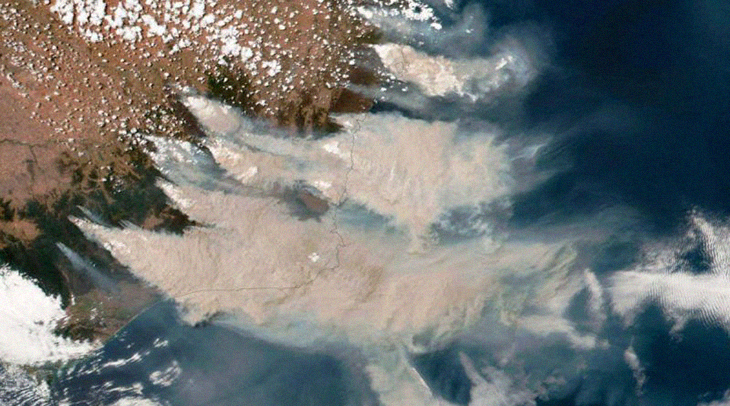
When Australia’s massive and uncontrollable wildfires were burning through the country during some months between the years 2019 and 2020, many believed that it was going to make an even bigger and horrific impact on global warming, like someone had given it a booster shot.
But despite the 715 million metric tons of carbon dioxide that was released into the atmosphere, while as horrible as it sounds, there was actually some amazing phenomenon that occurred from it. And new research has proven it too.
In fact, this research is an amazing reminder of just how amazing the planet is, and everything within it. From the millions of ton of iron-rich ash that drowned out the skies from these giant wildfires, algal blooms in the ocean managed to eat their way through these deposits of ash, absorbing an impressive 80% of the CO2 that was released.
Iron is known to aid in the growth of phytoplankton, which is a type of microscopic marine life, and it uses photosynthesis to create energy just like plants do. From the ash, there were huge colonies – otherwise known as “blooms” – that began to show up off the South Australian coast. There was another one, which reportedly measured just as wide as Australia, was found in the Pacific Ocean, closer to Chile. It was said to have stayed there for three months or so.
The study, which was conducted by Dr. Richard Matear and his colleagues from Australia’s national science research body, CSIRO, managed to get their data on the blooms life cycle via satellites. The team managed to compute just how much CO2 the algal blooms absorbed before they disappeared. They note that if they phytoplankton had not taken in the 80% of the wildfires emissions that they did, it would have made its way to the ocean floor.
Dr. Matear explained to publication New Scientist, “It shows a very nice connection between the land and the ocean and how the system tries to balance things out.”
Phytoplankton sits at the bottom of the marine food web, so to speak, which is why it is also believed that it adds to the increase of other sea creature populations. But again, this is one study that has yet to be done to prove it.
Moreover, burned ground is said to be incredibly ideal for the regrowth of plants, which is why many scientists will argue that when there is a normal type of wildfire, it is normally considered carbon neutral ‘as the emission are recaptured through the regrowing plants.’
But they also explain that when a wildfire is bigger than usual, droughts tend to last longer while forcing temperatures to rise as well. This makes scientists wonder if plant regrowth can survive or possibly come back thick enough to recover whatever was lost in the fire.
Thankfully, they share that at least when it comes to terrestrial ecosystems, it seems that the aquatic ones will be the ones to save the day.
Despite the algal blooms managing to make a positive difference, scientists are still worried about the continuous climate change due to the frequency of wildfires all throughout the planet. The fear is that in the future, the vegetation regrowth won’t be able to offset the amount of carbon emissions released into the air.
Moreover, CSIRO’s Pep Canadell, who was not part of the study, states that another consideration is how long the carbon capture will last. Their research has also shown that when these algal blooms die, the carbon is transported to the deep ocean while the rest could possibly be released back into the atmosphere.
He shared, “We don’t know if this is 50 per cent or 20 per cent or what so we need longer term research to find out.”
What are your thoughts? Please comment below and share this news!
True Activist / Report a typo


